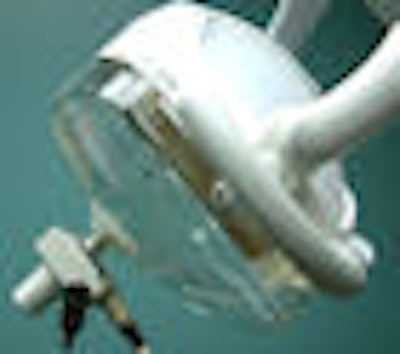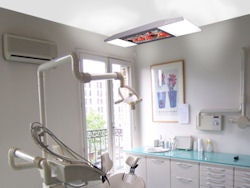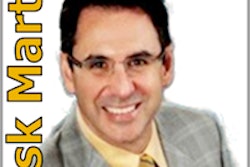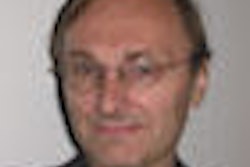
Now that we've dispensed with paper, perhaps the next technology to disappear will be writing itself. That's the futuristic possibility being offered by Nizar Mansour, D.D.S., M.S., a practicing Michigan dentist who develops technologies for dentists on the side.
Among Dr. Mansour's offerings is Beyond Seeing, an analog video camera plus microphone designed to attach to any operating light and eliminate the need for note taking with a pen or keyboard.
No more jotting down pocket depths, marking excessive wear on No. 3, or documenting your instructions to the patient about rinsing with chlorhexidine. Instead, you can just videotape it all.
The notion of videotaping a patient visit isn't entirely new, of course, but Dr. Mansour claims this is the only camera made to attach to operating lights. He offers it as a method for both educating patients and preserving a record of what you said and did.
 |
| The Beyond Seeing oral video camera mounts to operating lights. All images courtesy of Nizar Mansour, D.D.S., M.S. |
"If I want to educate, I show them," said Dr. Mansour, who presented the camera at the Chicago Dental Society Midwinter Meeting in February. "If I want to protect myself, I have a document."
Beyond Seeing can take the place of a handheld intraoral camera, he noted. It comes with a cover that can be removed and disinfected. Focus is manual, so you can pick out whatever detail you want within the mouth, but the camera automatically adjusts for light.
Patients can watch what you're doing as you do it because the camera's signal can be sent to an overhead monitor. Dr. Mansour, through his company New Image Technology, also provides a liquid crystal display (LCD) ceiling-mounted monitor that he imports into the U.S. from Ekler of France.
The Luxima 32-inch monitor receives its signal wirelessly, which simplifies the electrical work required. It can also play DVDs, TV, or any other video input -- plus it doubles as a fluorescent ceiling light, emitting 27,000 lumens. (It can be dimmed when patients are watching the monitor.)
 |
| The Luxima wireless monitor mounts on the ceiling. |
If you're thinking of replacing an operating light, Dr. Mansour also distributes Ekler's Elio, a two-bulb light-emitting diode (LED) operating light with a built-in video camera.
And, under his own brand, he is selling the Planetario LED operating light that has five LEDs mounted in a circle, and the LUX-5 with five LEDs mounted in a series. Both can be attached to the ceiling, a wall, or a mobile stand with castors.
The advantage of LEDs over the halogen lamps typically used in operating lights is that they last longer and produce more light with less heat while consuming less energy, Dr. Mansour said. The Planetario emits 40,000 lux. In addition, halogen bulbs dim with time while LED bulbs do not, he said.
Dr. Mansour is charging $5,300 for Beyond Seeing. The other devices are so new to the U.S. market, Dr. Mansour said, he has not yet determined their list prices.
Cost aside, some tech experts question the role of videotaping versus other forms of record keeping.
"I don't see the need for most dentists to record video," said Martin Jablow, D.M.D., a dental technology consultant who writes DrBicuspid.com's Ask Marty column. "My first inclination about it is to say it's more of a toy."
Competing products include the MagnaVu (Magnified Video Dentistry) and the Explorer (CamSight), two mounted cameras with LED lights that enable the doctor to treat the patient while looking at a monitor. They are being marketed as a more ergonomic alternative to bending over the chair and looking directly at a patient's mouth.
One problem, Dr. Jablow noted, is that mounting a camera on your operating light will mean an extra cable trailing across the operatory to the computer.
As for the lights, "I think LED is where we're going," he said. "But I don't see too many offices taking out their existing light."
The Luxima monitor, on the other hand, "is a neat trick," Dr. Jablow said. "I've got to hand it to him."
The main competitor is perhaps the Technology and Lighting Center (Seltzer Institute). With this system, a monitor drops from a ceiling track and can be adjusted so that the patient can look at it sitting up or lying down. It comes with lights that shine only on the patient's mouth.
In fact, a potential drawback to the Luxima monitor, Dr. Jablow noted, is that the patient can only look at it from a supine position. Doctors would have to crane their necks to discuss what's on the monitor with their patients.
Overall, he said, "this is more gimmicky than something most offices are going to install."
Copyright © 2009 DrBicuspid.com



















